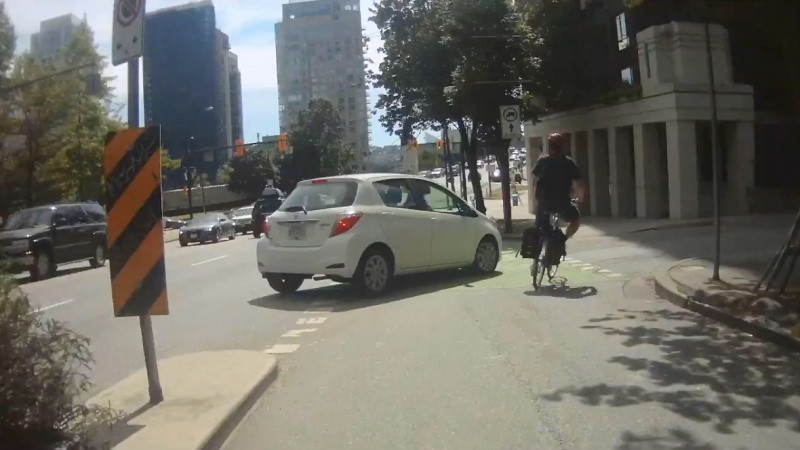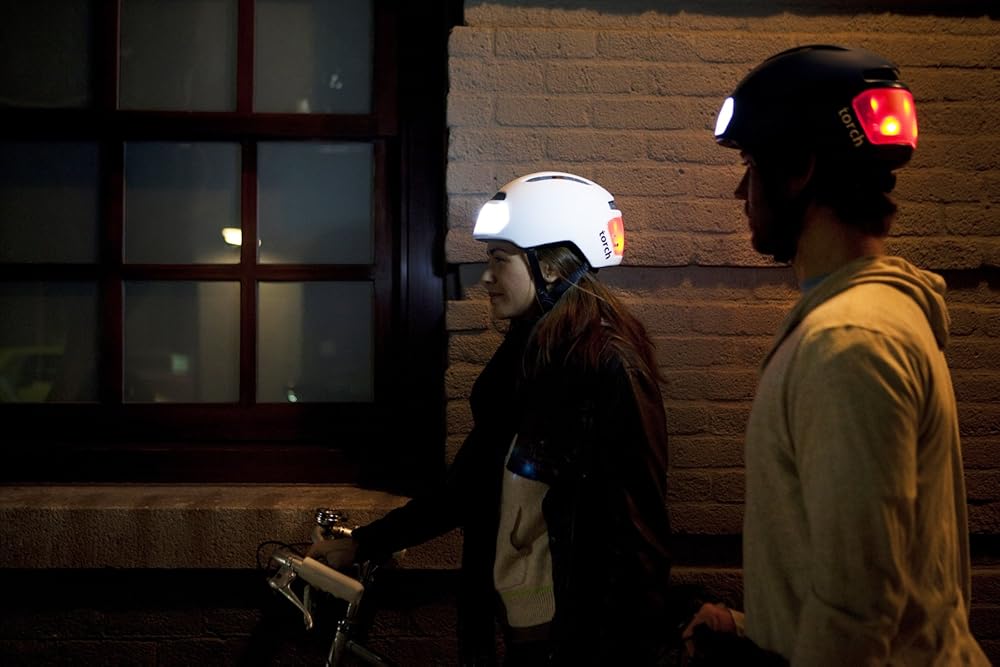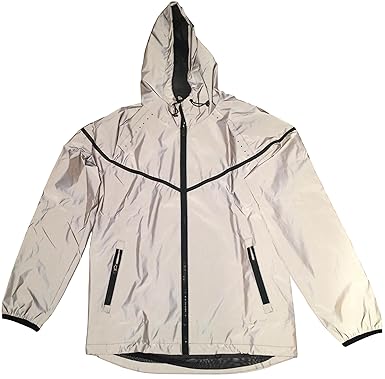A large fear of riding a bike is getting hit by a car. This fear is more than justified as seemingly you can’t go a week without hearing about someone being hit. The good thing with vehicles and cyclist collisions is that they are not just left to chance. They are a combination of driver error and lack of know-how by the cyclist the majority of the time. The combination of the two can produce deadly results but improving either side will reduce the chance of an incident to almost zero. As a cyclist you can’t change the other side of the equation (at least in the moment) but you can take action on your side to not get hit by a car. Taking the appropriate actions ahead of time, during the critical moment, and constantly being aware will decrease your chances of getting hit and allow you to ride comfortably. You do not want to eliminate that fear however as that is what keeps you alive. You just want to be able to effectively manage that fear to keep you safe.
Top Ways Cyclists Get Hit By a Car
The majority of collisions between cyclists and vehicles happen in the following situations. All of these are driver error largely because they don’t know the cyclist is there. (It is very rare that a driver will see you and still execute one of these actions unless they think they have time enough to get ahead of you but in fact don’t.) The one thing you have control of in these situations is you. You may not think that you will remember these actions while on the road but having gone through the thought process once or more before will allow your brain to think and react quicker in a situation on the road.
The Pull Out
This is where a car is pulling out onto the roadway from a side street, driveway, parking lot, or other area. The driver will look quickly and not see a cyclist approaching thus hitting them.
Cyclist’s Action
This will happen most often on busy roadways as the driver is intent on quickly getting into the travel lane before any approaching cars which minimizes the time they spend looking in either direction to make sure it is clear. As soon as you see a car approaching the roadway to turn out, assume they DO NOT see you. Stop pedaling, sit up more to make yourself more visible, try and make eye contact, and if they still don’t acknowledge you, put on the brakes and slow and stop if need be. If there is not enough time to do this, turn into the side road, driveway, parking lot, etc. of which the vehicle is turning out of. This will prevent you from crossing the projected path of the vehicle.
The Left Cross
A vehicle turning left across the roadway is one of the most dangerous maneuvers that a cyclist can be on the wrong end of. This is because the speed is higher and movement is more in opposing directions multiplying the forces should an impact occur. Vehicles will look up the lane to see if it is clear and not necessarily across the lane to see if a cyclist is there. If they do see the cyclist, it is often because the movement caught their eye. Not because they were looking to see if they were there but by chance saw them.
Cyclist’s Action
This is one of the most difficult maneuvers to recognize and have time enough to take action because of the potential speed and distance between the two being greater at the time an action needs to begin taking place. There are actions to take to be more visible (of which will be touched on below) but that still is relying on the driver seeing you and not making an error. The first thing to do to help avoid this incident is anytime there is a road to your right (in countries where you drive on the right), parking lot, etc. look to your left and up the road to see if any traffic is coming or potentially pulling straight across the roadway. If there is, immediately look for any turn signals or slowing that might be occurring indicating a turn. Because the distance is greater, it will be difficult to make sure that they saw you and to make eye contact. The best action is to stop pedaling and brake as you approach where the vehicle will turn. If the vehicle hasn’t stopped to let you continue straight, come to a complete stop before you would cross their line of travel. If you do not have time to stop or it is better/easier, turn right into where that vehicle is turning but do so as far to the right as possible to not cross the vehicle’s line of travel.
The Right Hook
This can happen particularly frequently in areas where drivers are less used to cyclists. This happens when a vehicle passes you and then turns right at the next road, parking lot, driveway, etc. crossing your path. It happens because they: one, don’t see you at all even when passing, or two, misjudge the speed you are traveling and think they are far ahead of you by the time they get to the turn, or three, forget they just passed a cyclist and turn into you.
Cyclist’s Action
Unless the vehicle just flat out doesn’t see you and turns straight into you, you will most likely have time to slow and make sure that they are going to wait and not turn into you. Whenever you are approaching a right hand turn where a vehicle is either next to you or has just passed you, slow down until you are certain that they are going to stop and wait for you to pass. If they don’t wait, you will have slowed enough to not be in their path. If you don’t have time enough to slow and/or stop, turn right with the vehicle and as far to the right as you can to avoid crossing the intended path of the vehicle.
Car Doored
In many areas the bike lane runs right in the path of a parked cars swinging door. In areas where cyclists are a regular occurrence, people think to look before they open their door to get out of their vehicle. This doesn’t always happen though and you shouldn’t bank on it.
Cyclist’s Action
The best way to avoid this is by simply riding far enough to the left of a parked vehicle where even if a door was swung open, it still wouldn’t hit you. The issue here however is that this will potentially put you in the path of passing traffic. The best way to overcome this is to ride as far to the left as possible without being in the lane. When a car does pass, you can slide slightly right but looking at each and every parked vehicle to see if someone is potentially getting out. This can be difficult but will lessen the chance of getting hit. When there is someone getting out of their vehicle right in front of you, you can’t simply swerve into the lane as you will potentially be hit. You need to slow as much as you can and only swerve enough to miss the door but not all the way out in traffic. Correcting the previous statement of “the best way” to avoid getting car doored is to simply avoid roads that have a lot of parked cars where you can’t easily ride far enough away from them. Find a better, less traveled route if possible.
Hit From Behind
This is probably one of the biggest fears cyclists have of getting hit by a car. Because of the speed difference and so many people on their phones and not paying attention, this fear is more than valid. However, the majority of cyclist – vehicle collisions do not happen this way. They occur in one of the above scenarios. It does still happen however but you can do a number of things to minimize the chances of it.
Cyclist’s Action
Being seen by the driver is the most obvious way to avoid getting hit from behind. However that relies upon the driver and not necessarily your actions. Wearing bright clothing and lights when needed will help. Riding in a way that makes you visible to drivers while still getting out of the way of any distracted drivers is the key. It depends on how many vehicles are on the road and passing you but riding on or just to the left of the white line or where it would be, puts you in the field of vision of the driver. They are not always looking down the side of the road to see what’s there since they are not driving there. This also then forces them to move over into the other lane slightly and to pass when it is clear instead of trying to squeeze past you. The issue here is when a driver doesn’t see you even when you are in the lane. You need to look behind you and see when a car is approaching. You will first hear it and then look. Just as the vehicle is about to pass, slide right to the side of the road regardless of if they have moved over or not. This gives more space and would allow a car to pass without hitting you if they in fact didn’t see you.
Traffic Lights
Traffic lights can be a potential hazard because of the close proximity of a lot of vehicles and the speed some may still be carrying. Stopping and passing through them in a way that is predictable, visible, and risk-averse will help you to not have any issues.
Cyclist’s Action
When approaching a red light, whether there are vehicles present ahead of you or not, do so in the same way as if a car was passing you. Ride in the lane to be seen and then slide right to not get hit should they not have seen you. Also if there is a vehicle ahead of you and you can slide down the right side of the road all they way up to the traffic light, do so. If you can’t, don’t stop immediately behind the last car in line but rather to side of it that way if a car coming up from behind doesn’t stop in time, you are not sandwiched between the two cars.
Riding Like You’re Invisible
In traffic, if you ride like no one can see you, you will greatly improve the odds of not getting hit. This means whether riding down the side of the road, riding through an intersection, or when cars pull out from side streets, you slow and stop if need be and/or ride in a position where a vehicle won’t hit you. This is important also on ultra busy roads where you can’t ride in the lane and then slide over for each car but rather have to ride down the side of the road. As long as drivers drive their normal way you’ll avoid any potential collisions. Some may argue that a cyclist has just as much right to the road and that they shouldn’t have to ride down the side of it or slow or stop in an intersection when they don’t have to but unfortunately regardless of who is at fault, we as cyclists are the ones who will always come up on the short end of the stick should a collision occur. A couple thousand pounds versus your 100 or 200.
Trust No One
Along with riding like you’re invisible, you should ride with the mentality of trusting no one. You have no idea who is behind that wheel and how good or bad of a driver they are and how respectful they are to cyclists. Always error on the side of NOT trusting the driver. Always thinking that they are not going to see you when they are pulling out from a side road, driving down a regular road, or turning in front of you will always have you braking and double checking that they do in fact see you. Never assume that they do. This alone will keep you from getting hit by a car even if you don’t know all of the above actions for each situation.
Pay Attention
When riding it can sometimes be difficult to pay attention the entire time. This is OK and we all do it. Only do it however when you’re on an open, empty stretch of road. If you’re around traffic or have a lot of intersections to navigate, pay attention. Seeing an issue before it occurs will give you time to react. Your head should be on a swivel looking for cars ahead, to the side, and behind. Constantly be aware of everything around you. Also make sure your hands are positioned on the bars so you can steer quickly as well as brake if need be to avoid getting hit by a car.
Changing Your Mentality to Avoidance
In addition to the above tactics, the best way to avoid contact or even close contact with a vehicle is simply to avoid them. Find the roads, routes between home and work, and bike paths that take you away from not only potentially dangerous roads but the majority of traffic in general. In some places this can be difficult to do but there are always other options even if it involves a longer, less direct route. Seek out these routes and make them your go to. Having a little bit longer of a commute or an out of the way road to enjoy on your ride is better than not making it to your destination or home after a ride. It’s never worth it and staying safe should be our priority number one. If we’re not going to stay safe doing what we love, then we should find other things to love. Getting hit by a vehicle and potentially dying, especially if it’s at the fault of another, is not something that should be taken lightly. Ride smart, stay safe, trust yourself and no one else, and live to ride another day.
Visibility Additions
These few products can help to not get hit by a car by improving visibility. In general, you should always wear brighter colored clothing but these will help to make you even more visible particularly at night or during low light conditions.
The Torch T2 Bike Helmet adds lights to your helmet to improve visibility.
The BrightLuz High Visibility Super Reflective Hooded Cycling Running Jacket is an ultra reflective jacket that can be worn at night, in low light conditions, or in the rain when drivers can have a harder time seeing.
Bright colored jerseys such as the FIOLLA Cyclo-Dri Mens Cycling Jersey/ Neon Hi Vizare are definitely the way to go to increase visibility regardless of ride time or location. A lot of companies have bright colored jerseys so find a good one that you like and will wear all the time. Some people think you don’t look “cool” or “stylish” if you wear a bright colored jersey like this. You know what’s not cool? Getting hit by a car. Wear one. Another good option is a brightly colored vest over your jersey.
Authors Note:
Over the recent few months I have had a number of friends and acquaintances hit by vehicles with some sustaining severe injuries. Each had their own scenarios but I can’t help but wonder what could have been avoided by changing the approach of the rider; the one thing we have control of in the moment. Perhaps nothing, maybe a little, but regardless, hopefully riding in the ways described above will help you to be safer on the roads. The approaches above are a combination of general cycling know-how and my own experiences. Knock on wood, I have never been hit by a vehicle after probably over 100,000 miles of riding in big cities, to small rural roads from first to third world countries the world over. Some of it comes down to luck, but a lot also comes down to your approach and mentality toward riding and how you deal with traffic.




